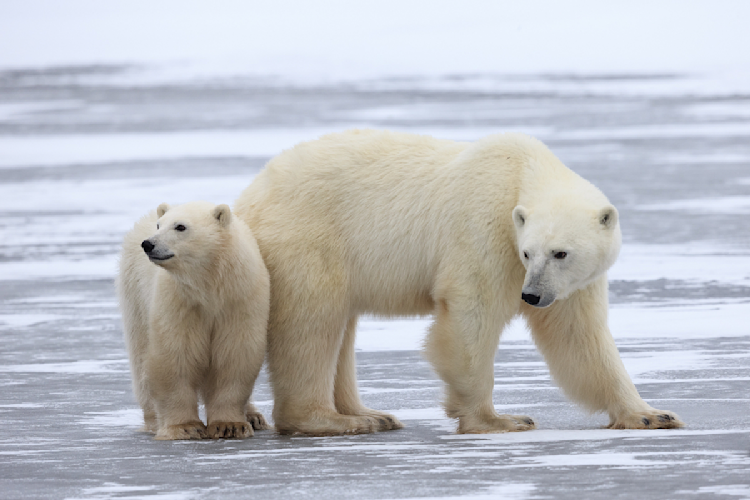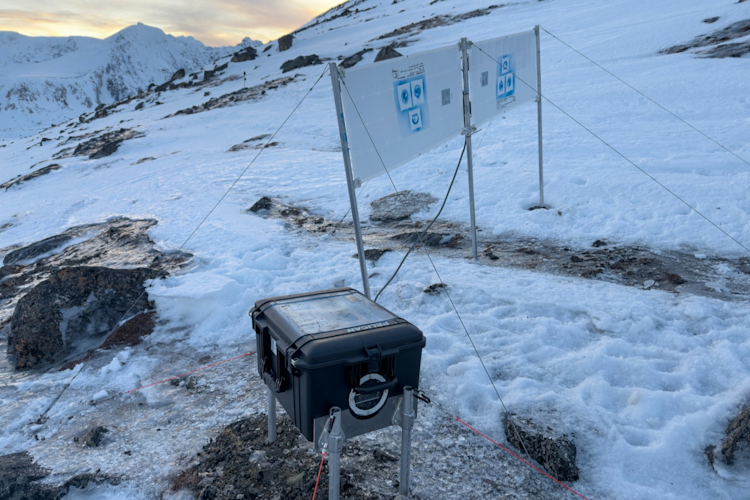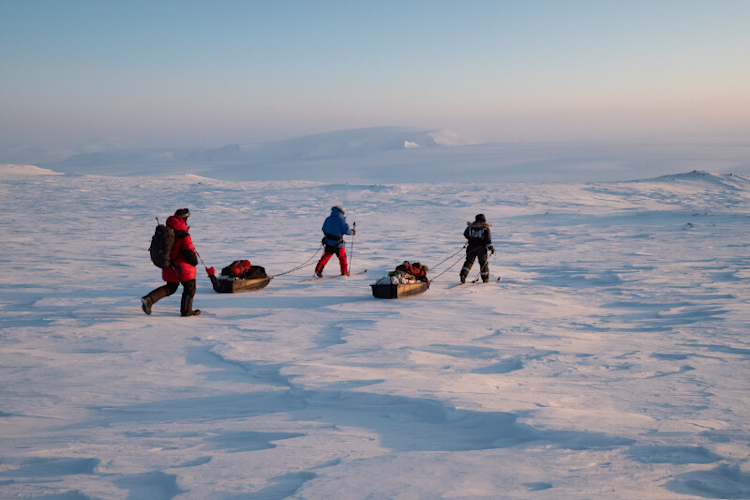Q: Where are you testing the systems?
A: We decided that Churchill, Manitoba, Canada,, would be the perfect test site for several reasons. First, polar bears gather near Churchill every fall as they wait for the sea ice to return. So, we knew we would reliably have polar bears to test there. Second, we already have vast infrastructure in place in Churchill to power our Polar Bear Cams and Tundra Connections® webcasts. Knowing we’d be able to piggyback on that—both the wireless and bandwidth—was a big plus. And, finally, the town of Churchill supported the idea and welcomed our team.
Q: Can you tell us more about the three radar systems? What are the differences?
A: The Spotter Global unit mentioned earlier is a medium-range system that can survey a wide area. A project like this takes time and we’re now in our fifth year of testing it. In 2020, we were able to program an AI component of the Spotter to test whether the system could tell the difference between a polar bear and other movement on the landscape—which is actually the hardest part. The first version did a pretty good job of being able to recognize a polar bear but we need to improve on the accuracy, and we’re focused on that right now, working to implement Spotter’s next generation of AI. Basically, we’re looking at making sure it can tell a polar bear from a human walking or a caribou grazing.
Our research so far shows that these devices are highly effective in detecting polar bears, even in blizzard conditions or at night. Our goal is to fine-tune the AI to correctly identify polar bears, triggering an alert before they hit the first road or the edge of town.
But the Spotter Global is a more complex system, and also more expensive, making it best suited for use by communities or large camps (e.g., industry, military, research). So, two years ago, in partnership with Brigham Young University, we also began testing Lidar, a simpler short-range ground-based radar. It’s easier to use and costs less. While it doesn’t have the wide range of the Spotter Global, it shows great promise for use at campsites or on small cabins. Further development is required to bring the project to market, but the initial tests were very promising.
In addition, engineers from a German company, Hensoldt, that produces a high power, long-range X-band radar, heard about the work we are doing and reached out to donate both time and equipment to test the effectiveness of their system in detecting bears. We did two years of research in Churchill with them and they have since moved their equipment to a research vessel in the Arctic for further testing. This was the longest-range system, with the most complex user interface, and also the most expensive, but it may have great utility in the ship-based niche for wildlife detection, staff safety, and security.
Q: Churchill already has a robust Polar Bear Alert Program. How do these radar systems fit into that?
A: Manitoba’s conservation officers do an amazing job of spotting approaching bears and responding to reports from citizens, but human patrols can be limited by darkness, foggy weather, or whiteout snowstorms. Ground-based radar systems could complement the efforts of Churchill’s Polar Bear Alert officers, sending an alert of an approaching bear and giving officers time to respond in a non-lethal manner. These systems could also help other northern communities that don’t have the resources for human patrols, in addition to protecting campsites and workstations.
Q: What have you learned so far? What are the next steps?
A: We are learning a little from each of our radar partners. The Spotter Global system is teaching us about the important role AI can play in reducing false alarms and correctly classifying targets. The Brigham Young University system is teaching us how custom-built software that combines multiple data streams into one easy-to-use interface can save time and money. And the Hensoldt system is showing us how well-designed systems can be set up very quickly, even if weather is making life difficult.
This fall will be our final test of the Spotter Global system with their updated software package. A graduate student from the University of Alberta plans to take the lead on teaching the new AI and reviewing its effectiveness for polar bear identification specifically. We will also be adding wind power to our charging mix and will examine the mix of wind and solar in keeping the system unplugged and operational even in the darker early winter days. Following efforts this fall, we will summarize lessons learned for a short publication in 2024 and make our test unit available to partners for real-time use in Churchill or other communities, pending needs and capabilities. We will then turn some of our attention towards the testing, development, and distribution of less-lethal deterrents as part of our ongoing polar bear coexistence work.
Q: Is there anything else you’d like to add about the project?
A: We’ve had a lot of interest in the radar systems from wildlife managers in northern communities. And beyond the community safety aspect, there’s a pretty interesting science story. The radar collects geospatial data, location, and speed—data that could potentially help with other studies, including our planned deterrent testing efforts.
Special thanks to RBC Tech For Nature for their generous grant of $75,000 CAD that served as seed money for our expanded Detect and Protect project. Thanks, too, to Utah’s Hogle Zoo for funding the pilot program, to individual donors who supported our Polar Bear Week fundraiser in support of the project, and to our various partners: Spotter Global, Brigham Young University, and Hensoldt.
In addition, special thanks to the town of Churchill for their cooperation during the test phase of the project, to Frontiers North Adventures for allowing us to mount a device on the Tundra Buggy Lodge, and to Amy Cocksedge of York University for making the concept the focus of her master’s thesis.

















